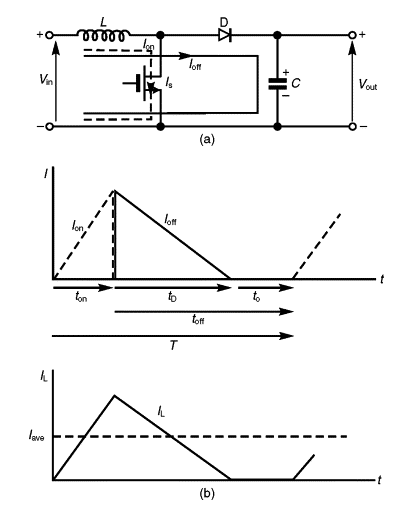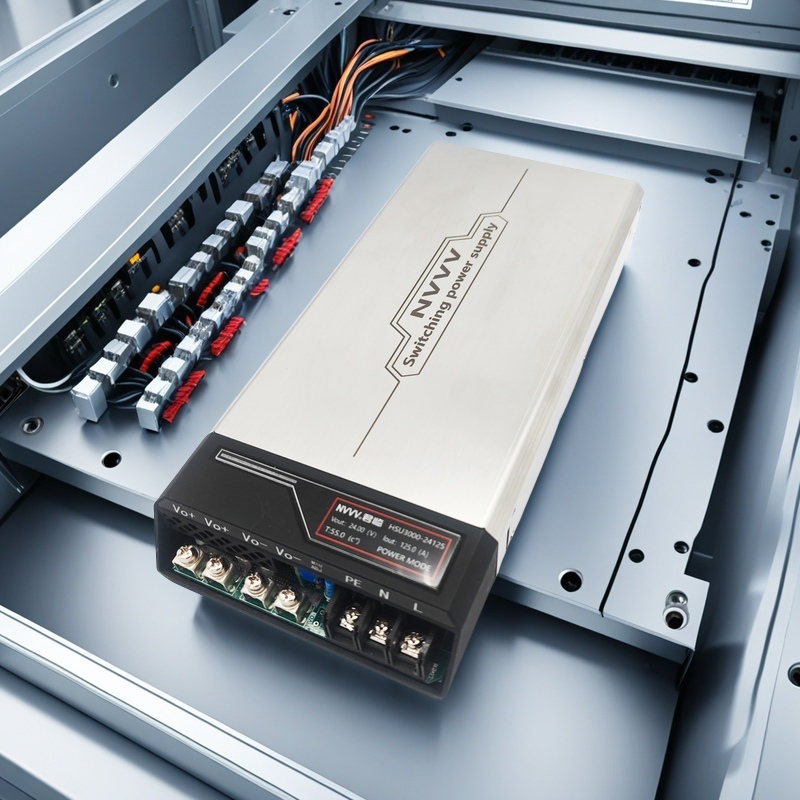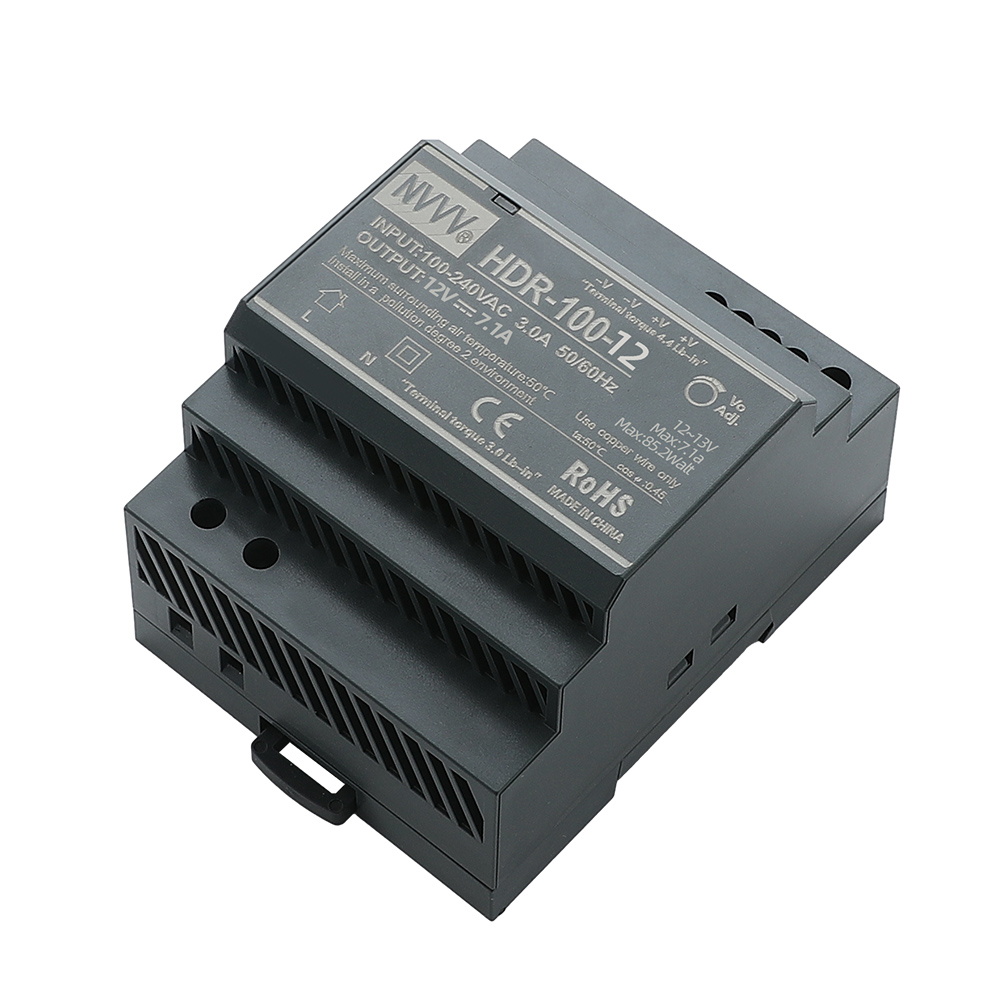What is a SMPS or how does it generate harmonics?
Switched-Mode Power Supply (SMPS) is a power conversion technology widely used in modern electronic equipment. With its advantages of high efficiency, small size, and light weight, it has gradually replaced traditional linear power supplies. However, SMPS will produce electromagnetic interference and harmonics during operation, which brings certain challenges to the stability of the power system and the normal operation of other equipment. This article will explore in detail what a switch mode power supply is and how it generates harmonics in its operation.
1. What is a switched mode power supply (SMPS)?
A switching mode power supply is a power conversion device that converts input electrical energy into output electrical energy through electronic switches (such as MOSFETs, IGBTs, etc.) in a high-frequency switching manner. Unlike traditional linear power supplies, SMPS reduces energy loss through efficient switching methods and significantly improves power conversion efficiency.
Working principle of SMPS
The working principle of a switching mode power supply is to control the on and off of current through high-frequency switching (usually a frequency of tens of kilohertz to several megahertz). The rapid switching of current generates pulse signals, which are converted into stable DC output through the filter circuit. This approach is different from linear power supplies, which use linear regulators to control voltage and current, are relatively inefficient and often generate a lot of heat.
The basic workflow of SMPS is as follows:
Input rectification: Convert alternating current (AC) into direct current (DC) through a rectifier circuit.
High-frequency switch: The electronic switch switches at high frequency, causing DC to generate pulse signals.
Transformer isolation: The pulse signal is voltage converted through a high-frequency transformer and electrical isolation of input and output is achieved.
Output rectification and filtering: The pulse signal is converted into a stable DC output through a rectifier and filter circuit.
Feedback control: The switching frequency and duty cycle are adjusted through the feedback control circuit to ensure stable output voltage.
Types of SMPS
According to different application scenarios, SMPS can be divided into the following common types:
Buck Converter: Converts higher DC voltage to lower DC voltage.

Boost Converter: Boosts a lower DC voltage to a higher DC voltage.

Flyback Converter: Commonly used in low-power applications to provide isolation and voltage conversion.
Forward Converter: Usually used in medium power applications, it has a simple structure and high efficiency.
Advantages of SMPS
Compared with traditional linear power supplies, SMPS has the following significant advantages:
High efficiency: SMPS reduces energy loss through high-frequency switching, and the efficiency can usually reach more than 80%, while the efficiency of linear power supplies is usually between 50% and 60%.
Small size and light weight: Due to high-frequency switching technology, SMPS transformers and filters can be designed to be smaller, making them suitable for portable devices and applications with limited space.
Less heat dissipation: High efficiency means less energy is converted into heat, thus reducing the requirements on the cooling system.
2. Why does SMPS produce harmonics?
Although SMPS has many advantages, it is prone to generating harmonics during its operation. This is because when the switching mode power supply operates at high frequency, it will produce a large amount of electromagnetic interference and non-linear load characteristics, which will lead to distortion of the current and voltage waveforms, thereby generating harmonics.
What are harmonics?
Harmonics are frequency components produced by distortion of current or voltage waveforms in power systems. Their frequency is an integer multiple of the fundamental frequency (usually 50Hz or 60Hz). For example, when the fundamental frequency is 50Hz, the harmonic frequency can be 100Hz (2nd harmonic), 150Hz (3rd harmonic), etc.
The existence of harmonics can lead to problems such as reduced power quality, equipment failure, and increased heat generation. Harmonics may also interfere with the normal operation of other electronic equipment, causing premature aging or even damage to the equipment.
How does SMPS generate harmonics?
The main cause of harmonics produced by a switch-mode power supply is the way it operates at high frequencies. Specifically, the harmonic generation of SMPS can be attributed to the following aspects:
Switching nonlinearity: SMPS achieves energy conversion by rapidly switching current, and this rapid current change is usually not linear. Nonlinear loads can cause distortion of the current waveform, thereby producing harmonics. Especially when the switching frequency is higher, the harmonic components will be more obvious.
Pulse current: Since the rectifier circuit of SMPS works within the positive and negative half cycles of the input voltage, the waveform of the input current appears as a pulse shape rather than a continuous sine wave. Pulse current contains a large number of high-frequency components, and these high-frequency components are harmonics.
Inadequacy of the input filter: Although many SMPS will design input filters to reduce harmonics, the generation of high-frequency harmonics cannot be effectively suppressed when the filter design is imperfect or the power is insufficient.
Impact of harmonics on power system
Harmonics not only affect the operation of the switching mode power supply itself, but also bring a series of negative effects to the entire power system, including:
Equipment heating: Harmonics will cause the current of power equipment to increase, thereby generating more heat, increasing the heat dissipation burden of the equipment and accelerating the aging of components.
Waste of electrical energy: The existence of harmonics will cause increased losses in power transmission and reduce the overall efficiency of the system.
Voltage waveform distortion: Harmonics can cause voltage waveform distortion, affect the power quality of the power system, and may cause interference to other sensitive equipment.
Increased losses in transformers and motors: Harmonics can cause increased eddy current losses and core losses in transformers and motors, shortening the service life of equipment.
3. How to reduce harmonics generated by SMPS?
In order to reduce the harmonics generated by SMPS, power supply designers and engineers usually use a series of technical means to suppress the generation of harmonics and improve the overall performance of the power system.
Using input filters
Input filters are a common means of harmonic suppression. By adding inductors and capacitors to the input circuit, input filters can effectively prevent high-frequency noise and harmonic components from entering the power system.
The basic principle of the filter is to filter out high-frequency components by taking advantage of the characteristic that the impedance of the inductor increases with the increase of frequency and that the capacitor behaves as a short circuit at high frequencies.
The design of the filter needs to consider the waveform, frequency and harmonic components of the input current. For SMPS of different power levels, the parameters of the filter need to be accurately calculated and optimized to ensure that harmonics can be effectively suppressed under high loads.
Using power factor correction circuit
Power factor correction (PFC) is a technology specifically designed to reduce harmonics and improve power factor. The PFC circuit can make the input current waveform closer to a sine wave, thereby reducing the generation of harmonics.
There are two main methods of power factor correction: passive power factor correction and active power factor correction.
Passive PFC: Improves the input current waveform through a simple network of inductors, capacitors and diodes, suitable for low-power applications.
Active PFC: The current waveform is adjusted in real time by the control circuit to make it close to a sine wave. It is usually used in high-power applications and has higher efficiency.
Increase switching frequency
Increasing the switching frequency of the SMPS can concentrate the harmonic energy in a higher frequency range, making it easier to remove it through the filter. Modern SMPS usually operates in the high frequency band of tens of kilohertz to several megahertz, reducing current waveform distortion through faster switching speeds.
However, increasing switching frequency also brings design and manufacturing challenges. For example, losses and heat generation in electronic components increase at high frequencies, so frequency and efficiency need to be weighed during design.
Adopt soft switching technology
Soft switching technology is a technology that can reduce switching losses and electromagnetic interference. By adjusting the voltage or current waveform before the switching device turns off, soft switching can reduce the generation of harmonics and reduce the noise and interference generated during the switching process.
Common soft-switching technologies include zero-voltage switching (ZVS) and zero-current switching (ZCS), which can effectively suppress harmonics without adding additional switching losses.
4. Detection and management of SMPS harmonics
In addition to suppressing harmonics in design and manufacturing, harmonic detection and management are also important means to ensure the stability of the power system. Harmonic detection can help engineers understand the harmonic levels in the system and take appropriate measures to make adjustments.
Harmonic analyzer
A harmonic analyzer is a device specially used to detect harmonic components in power systems. It can monitor current and voltage waveforms in real time and decompose harmonic components to help engineers locate the source of problems.
Through the harmonic analyzer, the amplitude and frequency of each harmonic can be accurately measured to understand the harmonic distribution in the system. Engineers can use this data to optimize the filter design or adjust the switching frequency.
Harmonic control device
For some occasions with serious harmonics, special harmonic control devices can be installed, such as active power filters (APF). APF can detect harmonic components in the system in real time and generate corresponding reverse harmonic current through the inverter to offset the original harmonics.
This active filter can effectively improve power quality and improve the stability of the power system, and is especially suitable for industrial and commercial sites with a large number of non-linear loads.
Conclusion
Switch-mode power supply (SMPS) is an important part of modern power conversion technology and has been widely used in various fields due to its high efficiency, compactness, and adaptability. However, switching power supply is prone to generating harmonics during operation, which brings challenges to the stability of the power system and the normal operation of the equipment.
By properly designing the input filter, using power factor correction technology, increasing the switching frequency, and adopting soft switching technology, the generation of harmonics can be effectively reduced. At the same time, harmonic detection and management are also important means to maintain the stability of the power system. With the development of technology, future SMPS will achieve greater breakthroughs in harmonic control and power quality optimization.











